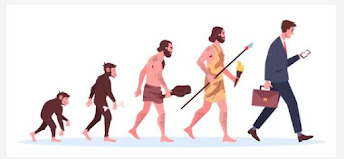Heredity and Evolution
Heredity is the transfer of biological characters from one generation to another via genes in simple words transfer of characteristics from parents to offspring is heredity. Johann Gregor Mendel is the pioneer of modern genetics. Because of Hugo de Vries mutational theory, the cause of the abrupt alterations was discovered in 1901. Living organisms, according to de Vries' mutation theory, can generate alterations to their DNA that drastically alter the organism. These alterations are handed down from generation to generation, resulting in the emergence of new species. To know the reasons behind the same characteristics and facial features check out my blog:
https://bustlingmindd.blogspot.com/2021/05/dna.html
When a new species evolves, it becomes stable and ceases to change. The fact that both the father and the mother contribute nearly equal amounts of genetic material to the kid determines the rules for the inheritance of such qualities in humans. This indicates that both father and maternal DNA can impact each trait. As a result, each child will have two versions of each attribute.
Evolution: Evolution is the gradual change occurring in a living organism over a long duration. According to evolution theory, the first living material (protoplasm) was produced in the ocean. Evolution is the gradual growth of plants and animals from predecessors with distinct structural and functional organization. Now, we all may have questions that what are the proofs for evolution? So, the following are the proofs:
1. Morphological Evidence: Morphological refers to external appearance. Animals have many similarities, such as the structure of the mouth, the position of the eyes, the structure of nostrils and ear pinnae, and heavily disturbed hairs on the body, whereas plants have many similarities, such as leaf shape, leaf venation, leaf petiole, and so on. This suggests that those groupings have certain similarities, implying that their origins are the same and that they share common ancestors.
2. Anatomical Evidence: Internal look is referred to as anatomical. The anatomy of bones and bony joints in the organs of each of these animals is identical. This resemblance suggests that the two creatures may have shared ancestry.
3. Vestigial Organs: Vestigial organs deteriorate or are undeveloped organs of an organism. In ruminants, the appendix, which is useless to humans, is a useful and completely functional organ. Similarly, muscles in the ear pinna that are useless in humans are useful in monkeys for ear pinna motions.
Wisdom teeth are also a vestigial organ as it is not useful to humans but it was essential for an early human diet of roots, leaves, meat, and nuts, wisdom teeth are no longer totally necessary.
4. Palaeontological Evidence: Underneath the surface, remnants and impressions of organisms are maintained. Fossils are what they're called. The study of fossils is an important part of evolutionary research.
5. Connecting links:
Some plants and animals have more morphological characteristics that allow them to be classified into two categories; thus, they are referred to as connecting links.
6. Embryological Evidence: In the photo, a comparative examination of the embryonic developmental stages of several vertebrates indicates that all embryos have extreme similarities that gradually decrease.
Journey of humans:
Industrial society was established about 200 years ago and now we have reached this stage, and still, we are searching the details of roots of human ancestry.
Hope you like this one let's meet in my next blog!











